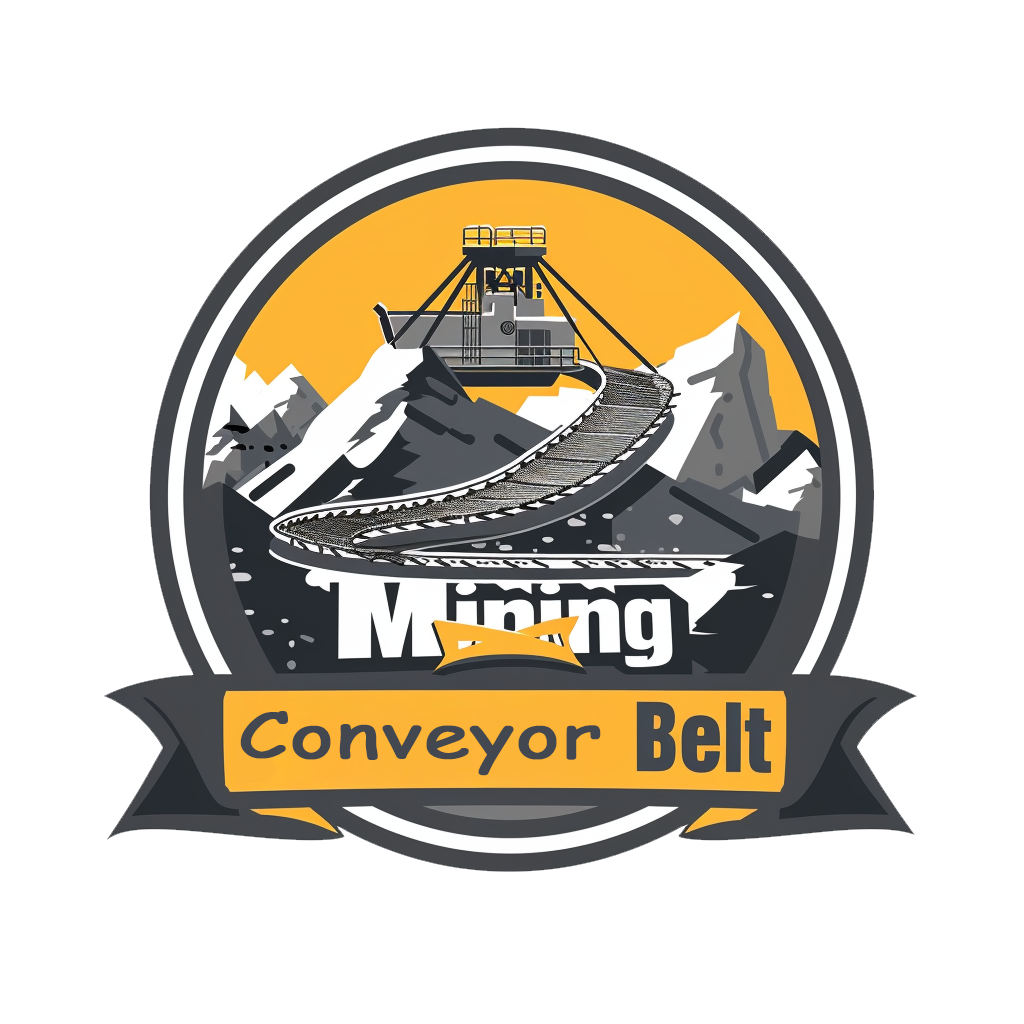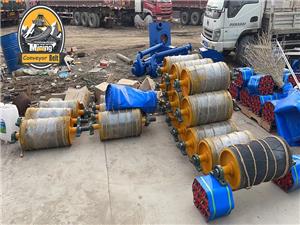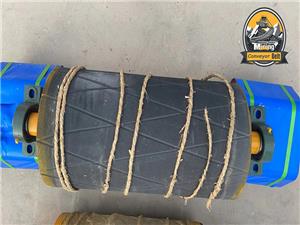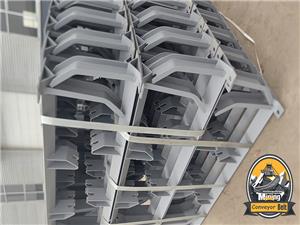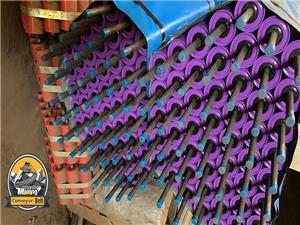19 common problems and solutions for belt conveyors
Belt conveyors are widely used in mining, metallurgy, coal, transportation, hydropower, chemical industry and other departments due to their large conveying capacity, simple structure, convenient maintenance, low cost and strong versatility. Problems with belt conveyors will directly affect production. This article shares common problems and possible causes in the operation of belt conveyors.
19 common problems and possible causes for belt conveyors
1. Possible reasons for the conveyor belt to deviate at the tail roller: a. The roller is stuck; b. Accumulation of material chips; c. Insufficient counterweight; d. Improper loading, spillage; e. The rollers, drums and conveyor are not on the center line.
2. Possible reasons for the conveyor belt to deviate at any point: a. Overload; b. Accumulation of material chips; c. Improper rollers; d. One side of the conveyor belt is subject to transition tension; e. Improper loading, spillage; f. The rollers, drums and conveyor are not on the center line.
3. Possible reasons for deviation of part of the conveyor belt at any point: a. Poor performance of the vulcanized joint of the conveyor belt, improper selection of mechanical buckles; b. Edge wear; c. The conveyor belt is curved.
4. Possible reasons for deviation of the conveyor belt at the head roller: a. The roller, roller and conveyor are not on the center line; b. Accumulation of material scraps; c. Wear of the rubber surface of the roller; d. Improper installation of the roller.
5. Possible reasons for the deviation of the conveyor belt to one side on several specific rollers: a. The roller, roller and conveyor are not on the center line; b. Improper installation of the roller; c. Accumulation of material scraps.
6. Possible reasons for the slippage of the conveyor belt: a. The roller is stuck; b. Accumulation of material scraps; c. Wear of the rubber surface of the roller; d. Insufficient counterweight; e. Insufficient friction between the conveyor belt and the roller.
7. Possible reasons for the slippage of the conveyor belt at startup: a. Insufficient friction between the conveyor belt and the roller; b. Insufficient counterweight; c. Wear of the rubber surface of the roller; d. Insufficient strength of the conveyor belt.
8. Possible reasons for excessive elongation of the conveyor belt: a. Excessive tension; b. Insufficient strength of the conveyor belt; c. Accumulation of material scraps; d. Excessive counterweight; e. Asynchronous operation of the dual-drive rollers; f. Damage caused by chemicals, acids, heat, and rough surface materials.
9. Possible reasons for the conveyor belt to break at or near the buckle, or the buckle to loosen: a. Insufficient strength of the conveyor belt; b. Too small roller diameter; c. Excessive tension; d. Wear of the roller rubber surface; e. Excessive counterweight; f. Foreign matter between the conveyor belt and the roller; g. Asynchronous operation of the dual-drive rollers; h. Poor performance of the vulcanized joint of the conveyor belt, improper selection of mechanical buckles.
10. Possible reasons for the breakage of the vulcanized joint: a. Insufficient strength of the conveyor belt; b. Too small roller diameter; c. Excessive tension; d. Foreign matter between the conveyor belt and the roller; e. Asynchronous operation of the dual-drive rollers; f. Poor performance of the vulcanized joint of the conveyor belt, improper selection of mechanical buckles.
11. The upper cover rubber is seriously worn, including tearing, gouging, breaking, and puncturing. Possible reasons: a. Accumulation of material scraps; b. Improper loading, spilling of materials; c. Relative loading speed is too high or too low; d. The load has too much impact on the buckle; e. Damage caused by chemicals, acid, heat, and rough surface materials.
12. Possible reasons for serious wear of the lower cover rubber: a. The roller is stuck; b. Accumulation of material scraps; c. Wear of the rubber surface of the roller; d. There are foreign objects between the conveyor belt and the roller; e. Insufficient friction between the conveyor belt and the roller; f. Damage caused by chemicals, acid, heat, and rough surface materials.
13. Possible reasons for serious wear of the conveyor belt edge: a. Uneven load; b. Excessive tension on one side of the conveyor belt; c. Improper loading, spilling of materials; d. Damage caused by chemicals, acid, heat, and rough surface materials; e. The conveyor belt is curved; f. Accumulation of material scraps; g. Poor performance of the vulcanized joint of the conveyor belt and improper selection of mechanical buckles.
14. The possible reasons for the presence of dot-shaped and stripe-shaped bubbles in the covering layer are: damage caused by chemicals, acid, heat, and rough surface materials.
15. The possible reasons for the hardening and cracking of the conveyor belt are: a. Damage caused by chemicals, acid, heat, and rough surface materials; b. Small diameter of the roller; c. Wear of the rubber surface of the roller.
16. The possible reasons for the embrittlement and cracking of the covering layer are: damage caused by chemicals, acid, heat, and rough surface materials.
17. The possible reasons for the longitudinal groove marks on the upper covering rubber are: a. Improper installation of the side guard; b. The roller is stuck; c. Accumulation of material chips; d. The load has too much impact on the buckle.
18. The possible reasons for the longitudinal groove marks on the lower covering rubber are: a. The roller is stuck; b. Accumulation of material chips; c. Wear of the rubber surface of the roller.
19. The possible reasons for the damage of the roller groove: a. The gap between the rollers is too large; b. The slope of the slope change point is too large.
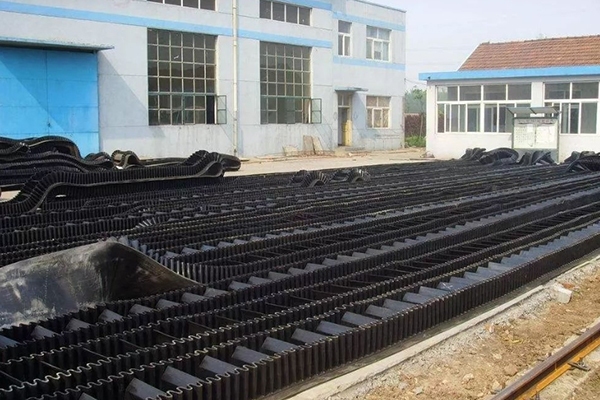
Common problems with belt conveyors:
1. The conveyor belt will not be curved on the whole core conveyor belt. For the layered belt, pay attention to the following points: a) Avoid squeezing and colliding with the layered conveyor belt; b) Avoid storing the layered conveyor belt in a humid environment; c) The conveyor belt must be straightened before running in; d) Check the entire conveyor system.
2. Poor performance of the vulcanized joint of the conveyor belt and improper selection of mechanical bucklesa) Use a suitable mechanical buckle; b) Re-tighten the conveyor belt after running for a period of time; c) If there is a problem with the vulcanized joint, cut off the joint and remake it; d) Observe regularly.
3. The elongation and deformation of one side of the conveyor belt will not occur on the whole core conveyor belt. For other conveyor belts, pay attention to the following points: The running-in of the conveyor belt needs to be long enough. If the conveyor belt is poorly run-in or is an old conveyor belt, remove the elongated and deformed part and remake a joint.
4. The counterweight is too largea) Recalculate and adjust the counterweight accordingly; b) Reduce the tension to the critical point and re-fix; c) If it is a winch tension, make appropriate adjustments.
5. Insufficient counterweight Recalculate and adjust the counterweight accordingly.
6. Damage caused by chemical substances, acid, alkali, heat, and rough surface materials a) Select conveyor belts designed for special conditions; b) Use sealed mechanical buckles or vulcanized joints; c) Take rain and sun protection measures for the conveyor.
7. Double-drive rollers operate asynchronously and make appropriate adjustments to the rollers.
8. Insufficient strength of the conveyor belt Due to increased coal flow at the center point or loading point, or reduced belt speed, the tension should be recalculated and a conveyor belt with appropriate belt strength should be used instead.
9. Edge wear Prevent the conveyor belt from running off, and remove the part of the conveyor belt with severe edge wear.
10. The gap between the rollers is too large Adjust the gap. Even when fully loaded, the gap between the rollers should not be greater than 10mm.
11. The conveyor belt and buckle are subjected to excessive impact of the load a) Correctly use the flow trough and buffer plate designed according to the working conditions; b) Install impact-resistant rollers; c) If possible, load the last coal first; d) If the side baffle does not block the coal, adjust the gap between the side baffle and the conveyor belt.
12. The rollers, drums and conveyors are not on the center line. a) Re-align; b) Install limit switches; c) Check the conveyor manual.
13. Improper loading and spilling of materials. a) The feeding direction and speed should be consistent with the running direction and speed of the conveyor belt to ensure that the loading point is in the center of the conveyor belt; b) Use appropriate feeders, flow troughs and side baffles to control the flow.
14. Insufficient friction between the conveyor belt and the drum. a) Use buffer drums to increase the wrap angle; b) Use rubber-coated drums; c) Use grooved rubber-surfaced drums in humid environments; d) Install appropriate cleaning devices on the conveyor belt; e) Check the initial tension.
15. Accumulated material chips (on drums and rollers) a) Install sweepers, scrapers, etc.; b) Remove material chips.
16. There are foreign objects between the conveyor belt and the drum. a) Use side baffles correctly; b) Remove foreign objects such as material chips.
17. The rubber surface of the roller is worn. a) Replace the rubber surface; b) Use grooved rubber surface in a humid environment; c) Deal with loose and protruding screws on the rubber surface.
18. The relative loading speed is too high or too low. a) Adjust the flow trough or correct the conveyor belt running speed; b) Consider using impact-resistant rollers and pay close attention to the operating conditions.
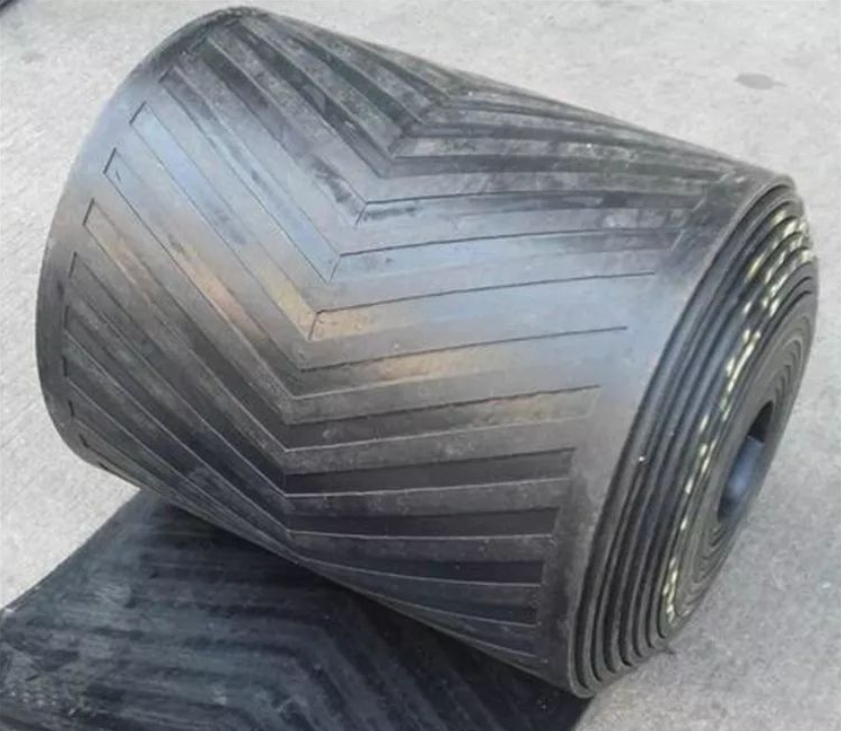
The above are common problems of belt conveyors and related solutions. In order to extend the service life of conveyor equipment and enable the equipment to perform production operations better, belt conveyors must be regularly maintained, so as to truly improve production efficiency and economic benefits.
